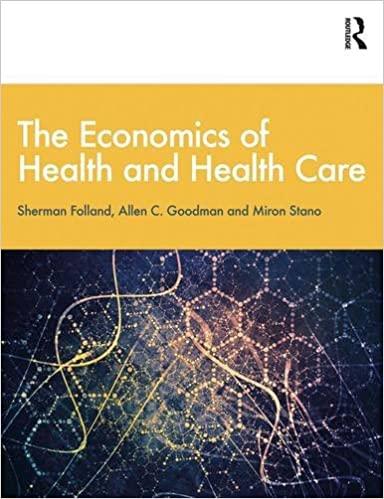Consider only the U.S. market from Exercise 3. Graph solutions to parts 6a and 6b using the
Question:
Consider only the U.S. market from Exercise 3. Graph solutions to parts 6a and 6b using the demand, average cost, and marginal cost curves. Also try to develop the answers algebraically.
(a) Price regulation is proposed. Find the regulated price that enables the fi rm to cover all its costs. Caution! There are two mathematical solutions. Which one will regulators prefer?
(b) Find also the economically effi cient price (i.e., one that is consistent with marginal cost pricing). What subsidy per prescription is required to enable the fi rm to cover all its costs?
Exercise 3
A pharmaceutical fi rm faces the following monthly demands in the U.S. and Mexican markets for one of its patented drugs:![]()
where quantities represent the number of prescriptions. Assume that resale or arbitrage among markets is impossible and that marginal cost is constant at $2 per prescription in both markets. Monthly fi xed costs are $1 million in the United States and $500,000 in Mexico.
(a) Draw the demand, marginal revenue, and marginal cost curves for each market. Estimate the profi t-maximizing prices and quantities graphically and/or determine the solutions algebraically. What are the fi rm’s total profi ts?
(b) Determine the quantity in each market and maximum possible total profi ts if the fi rm engages in perfect (fi rst degree) price discrimination. Is this behavior possible?
Step by Step Answer:

The Economics Of Health And Health Care
ISBN: 9781138208049
8th Edition
Authors: Sherman Folland, Allen C. Goodman, Miron Stano





